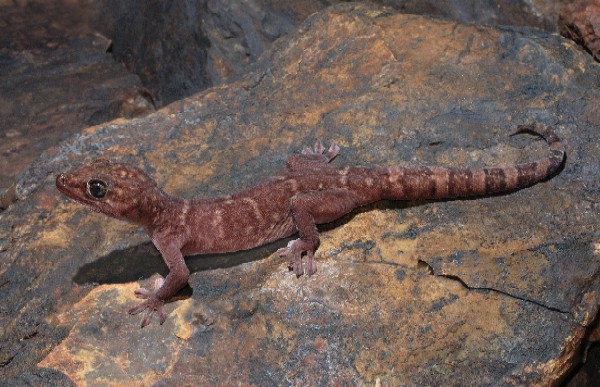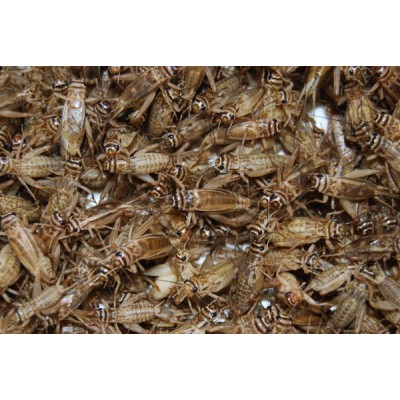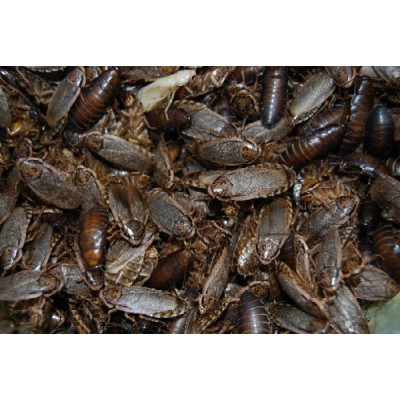Giant Cave Gecko (Caresheet)

CAPTIVE HUSBANDRY
Although Giant Cave Gecko's (Pseudothecadactylus cavaticus) are natives of tropical northern Australia and requiring warmer temperatures in captivity than most other Australian species, they are still remarkably tolerant of low temperatures for short periods, even down to 10-12°C. Ideally, a hot spot of mid-30’s should be provided by a coloured bulb or heat pad throughout most of the year. Over winter the temperature of this area can be reduced to 25-26°C while the remainder of the cage is allowed to drop to mid-teens. As these are agile climbers a tall cage design is essential, e.g. 50x30x70cm high. Despite their size they are not particularly aggressive feeders and will usually only take 1-2 items at each feed, although they can consumelarge prey items thanks to their powerful jaws. Spray the enclosure regularly, at least twice a week in winter and 3-4 times a week in summer.
CAPTIVE BREEDING
Compatibility between male and female giant cave geckos appears to be the key to successful breeding. The female is often the more dominant of the pair and can becomequite aggressive towards the male and cause significant injuries. Do not try to maintain these species as trios as the additional gecko, whether it be male or female, seems to cause friction between all cage mates and breeding is usually hindered and aggression is rife. Once a compatible pair is established, they should breed every year but often only one clutch will be produced each season. With P. cavaticus, the eggs are laid quite early in the season, usually around September-October, so there is plenty of time for additional clutches, yet the single clutch appears to be the rule. The eggs are laid in large plastic containers sufficient in size for the female to enter through a hole cut in the top and turn around easily once inside. The container can be filled with a moist substrate such as sphagnum moss or a sand/palm peat mix to a depth of 70-80mm. Incubation will take around 65-75 days at 28-29°C.
- All images property of Gunther Schmida & Rob Porter
OpenCart Maintenance
© Copyright 2001-2025 Livefoods Unlimited - All Rights Reserved
Tel: 0400464505 - livefoods@outlook.com - A.B.N 37 960 709 736


